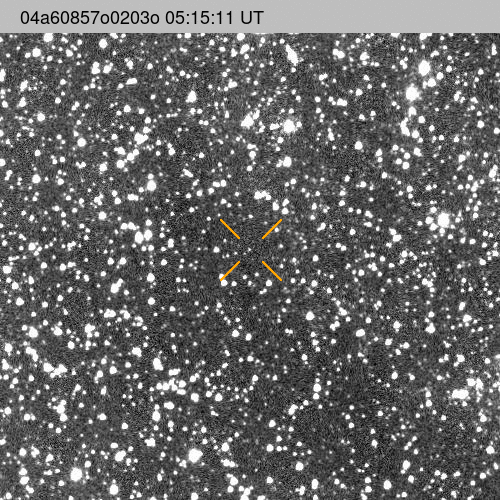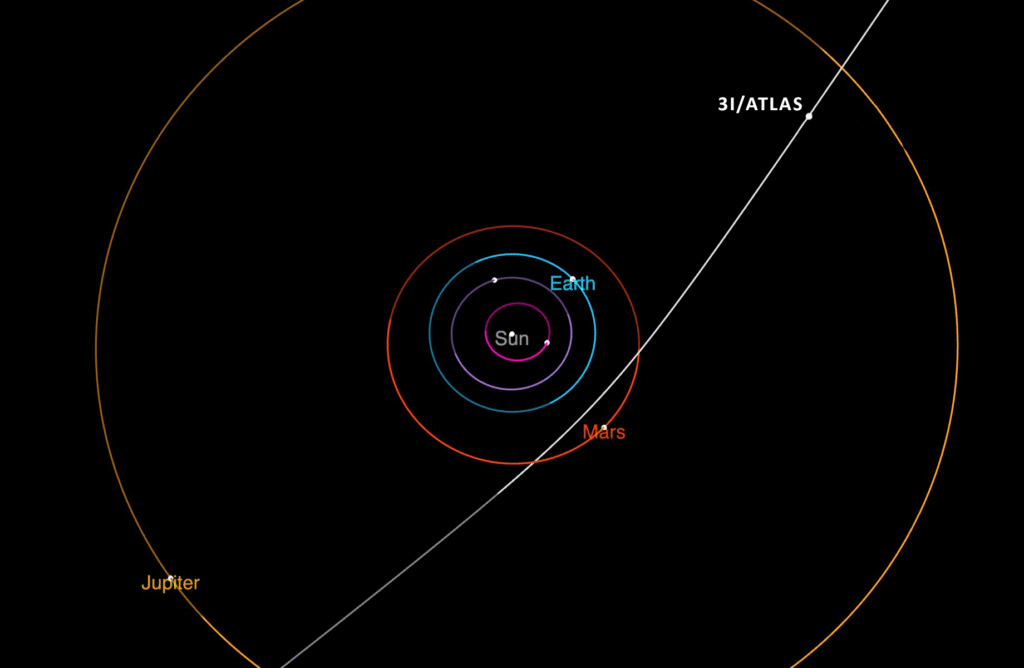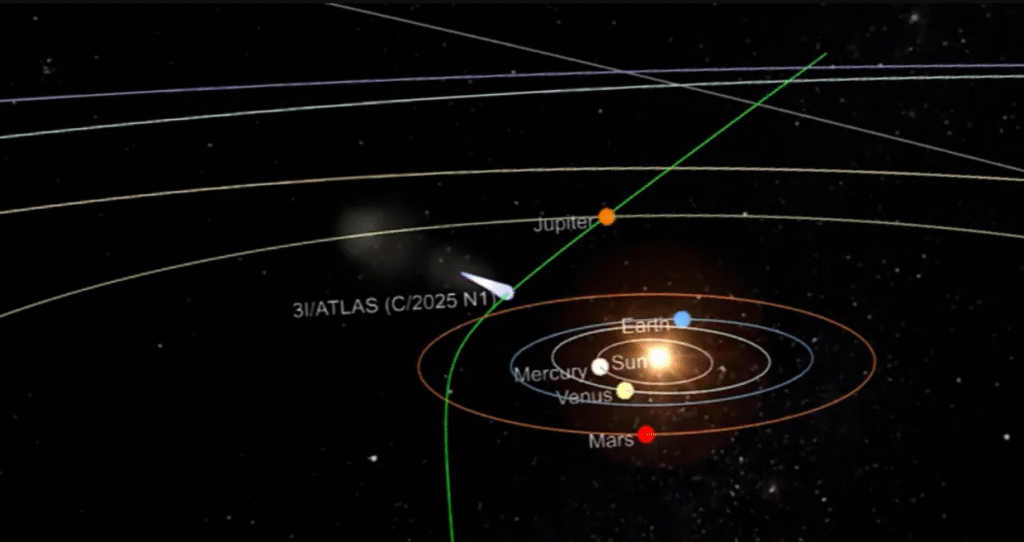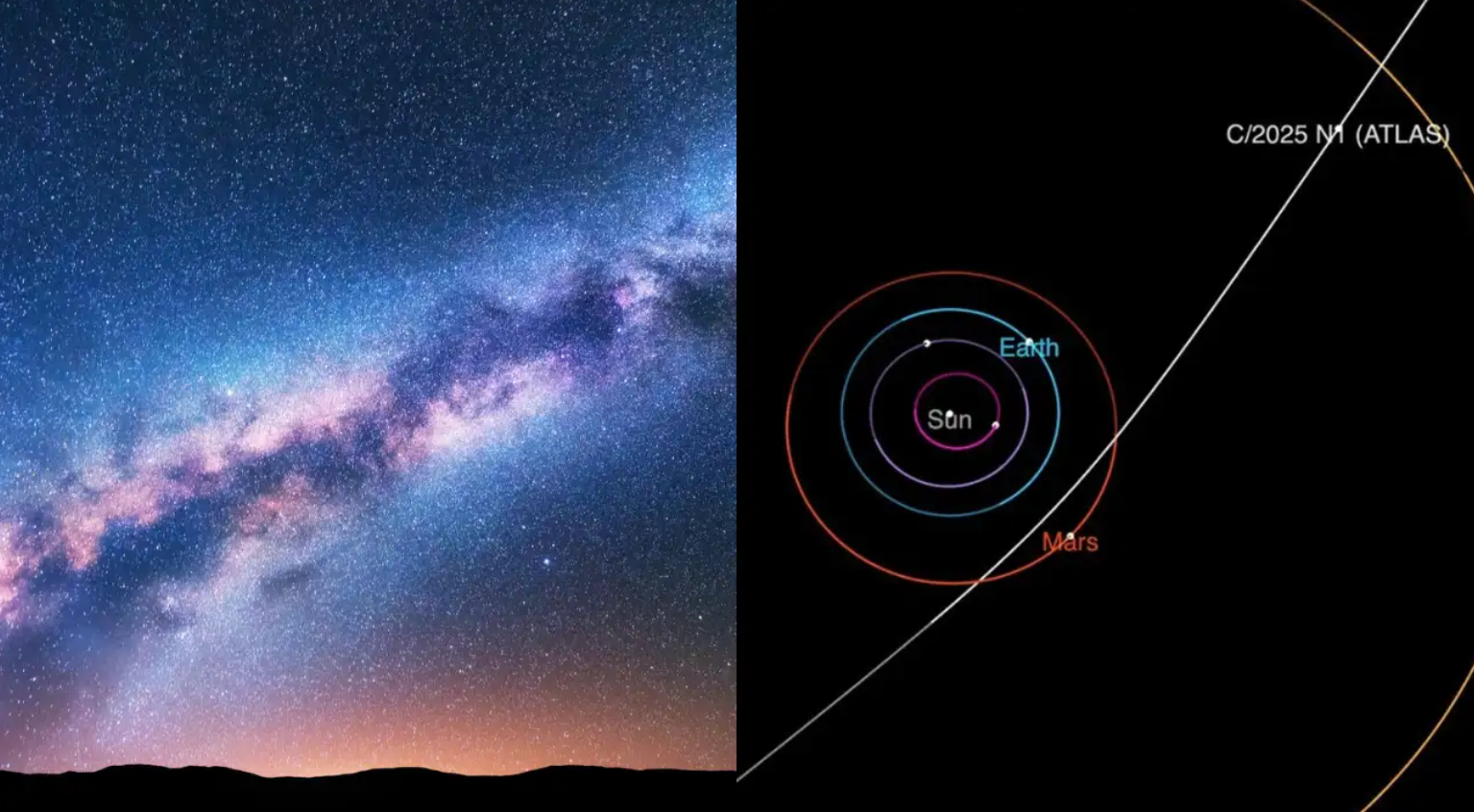NASA-funded telescopes have discovered Comet 3I/ATLAS, a fast-moving interstellar object racing through our solar system. Learn about its speed, origin, and what it reveals about our galaxy.

On July 1, 2025, scientists using a NASA-funded telescope in Rio Hurtado, Chile, detected something extraordinary: a comet not born in our solar system, but one that traveled untold distances across the Milky Way galaxy.
This new interstellar object, now named 3I/ATLAS, marks only the third confirmed interstellar visitor to our solar system—after 'Oumuamua in 2017 and 2I/Borisov in 2019. Its name stems from the ATLAS survey system (Asteroid Terrestrial-impact Last Alert System), which initially spotted it.
Unlike local comets that orbit the Sun in predictable paths, 3I/ATLAS is on a one-way journey, never to return.
How the Discovery Unfolded
While it was first officially observed on July 1, astronomers have since unearthed earlier sightings by scouring archives from multiple ATLAS observatories and the Zwicky Transient Facility in California.
These “pre-discovery” data points date as far back as June 14, offering a more complete view of the comet’s trajectory and behavior. Since the announcement, astronomers worldwide have been racing to study it in real time.
Where Is 3I/ATLAS Now?
As of early July, Comet 3I/ATLAS is located about 420 million miles (670 million kilometers) from Earth and roughly 4.5 astronomical units (au) from the Sun. That’s well beyond Mars, but within telescope range.

Here’s what we know so far:
- Closest distance to Earth: 1.6 AU (~150 million miles)
- Closest approach to Sun: Around October 30, 2025, at 1.4 AU (~130 million miles)
Good news—3I/ATLAS poses no threat to Earth. It’s a silent traveler, merely passing through.
How Fast Is This Comet Moving?
One of the most surprising features of Comet 3I/ATLAS is its speed. It’s barreling through space at approximately 57 kilometers per second (36 miles per second)—almost twice as fast as previous interstellar objects.
For comparison:
- ‘Oumuamua (2017): ~26.3 km/s
- 2I/Borisov (2019): ~32.2 km/s
- 3I/ATLAS (2025): ~57 km/s
This velocity confirms what astronomers already suspected—3I/ATLAS is not gravitationally bound to the Sun and is on a hyperbolic path. It’s zooming past us and will never return.
What Makes 3I/ATLAS So Unique?
A Different Region of the Galaxy
Thanks to a new computer model developed by PhD researcher Matthew Hopkins, scientists believe that 3I/ATLAS likely comes from the thick disk of the Milky Way—a region above and below the spiral plane where older stars reside.
This contrasts with previous interstellar visitors, which are thought to originate in the thin disk—the region where our Sun also exists.
“It’s likely this thing’s been out there longer than the Solar System itself—over 7 billion years,” explained Professor Chris Lintott, Hopkins’ advisor and co-author on a new scientific paper about the comet’s origin.
A Redder Appearance
Early observations from the Very Large Telescope (VLT) in Chile reveal that 3I/ATLAS has a redder hue than typical comets—resembling the Centaur-class asteroids in our own solar system. Cosmic rays likely altered its surface color during its long journey through interstellar space.
This color might also hint at its chemical composition, and whether it’s rich in water or organics—critical clues to how planets and life may form in distant star systems.
Hoping to Learn
1. Composition and Activity
Scientists are closely watching for signs of cometary activity—like the release of gas and dust—as 3I/ATLAS gets closer to the Sun.
“Our model predicts that older stars should produce water-rich interstellar objects,” said Lintott. If correct, 3I/ATLAS could erupt in comet-like activity as it heats up, offering valuable data on its internal chemistry.
2. Origins and Motion
The way 3I/ATLAS moves—vertically across the galactic plane—also supports the theory that it originated from the thick disk, not the spiral arms.
It’s the first time scientists have observed an object from this less-studied galactic region, adding a new layer of understanding to how interstellar objects travel.
3. A Billion Billion Billion More?
The team estimates that the Milky Way may contain 10²⁷ interstellar objects—a billion billion billion—and about 10,000 could be within Neptune’s orbit right now. Most are simply too small or dark to detect with current technology.
But new observatories like the Vera C. Rubin Observatory may change that. With its rapid-scan capabilities, it can identify thousands of moving objects in just a few nights.

How to See 3I/ATLAS
You’ll need at least a mid-range telescope to spot 3I/ATLAS from Earth. The object will be visible through September 2025, after which it will pass too close to the Sun for observations. It’s expected to reappear in December from the other side of the Sun, offering another chance for ground-based studies.
Stay updated with NASA or ESA’s live tracking platforms, or use sky-watching apps like Stellarium to locate it in the night sky.
Why This Discovery Matters
Interstellar objects are not just fascinating—they’re time capsules from other worlds. Each visitor gives us a glimpse into the material, chemistry, and dynamics of regions far beyond our own.
Key Takeaways:
| Feature | 3I/ATLAS |
|---|---|
| Type | Interstellar comet |
| Speed | ~57 km/s |
| Closest Earth Distance | ~1.6 AU |
| Closest Solar Approach | ~1.4 AU (Oct 30, 2025) |
| Composition | Likely water-rich and organic |
| Region of Origin | Thick disk of the Milky Way |
| Visibility | Through Sept 2025; returns Dec 2025 |
Could Comets Like This Spark Life
There’s a growing theory that interstellar objects might have played a role in kickstarting planet formation—perhaps even life—by delivering essential molecules to early solar systems.
“It’s possible our Earth started with something like this arriving,” said Lintott. “That’s just a cool and exciting idea.”
More than anything, the comet has reinvigorated a sense of awe and curiosity in the astronomical community.
“This is what I thought astronomy was when I was a kid,” said Lintott. “We found a thing, we’re pointing telescopes at it, and now we’re all arguing about it. It’s the best!”
The discovery of Comet 3I/ATLAS marks a thrilling chapter in our exploration of the cosmos. It’s more than just a rare visitor—it’s a messenger from the far reaches of the galaxy, possibly older than the Sun itself.
As telescope technology advances, this may be just the beginning. Who knows how many more interstellar travelers are waiting to be found?
Stay tuned—and keep your eyes on the stars.
Also read :
10 Books That Feel Like Therapy For Mind And Soul
Musk’s xAI Deletes Posts After Grok AI Chatbot Controversy Involving Hitler
Monica Barbaro and Andrew Garfield Spark Joy in Matching Outfits at Wimbledon 2025

